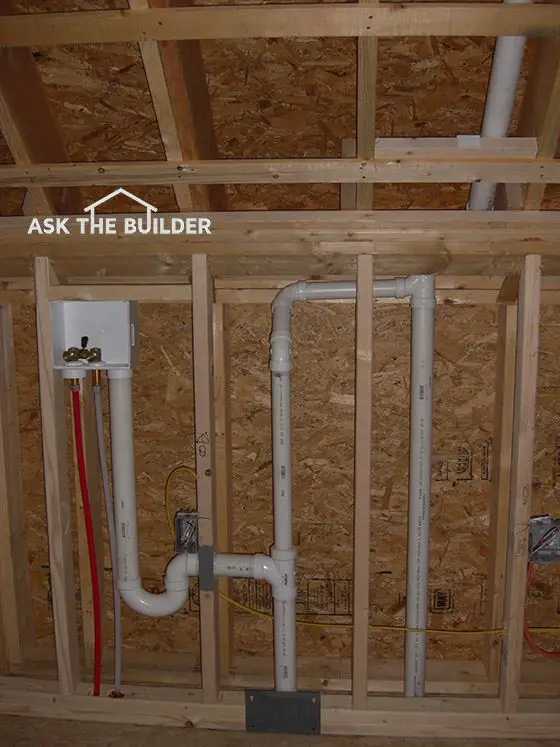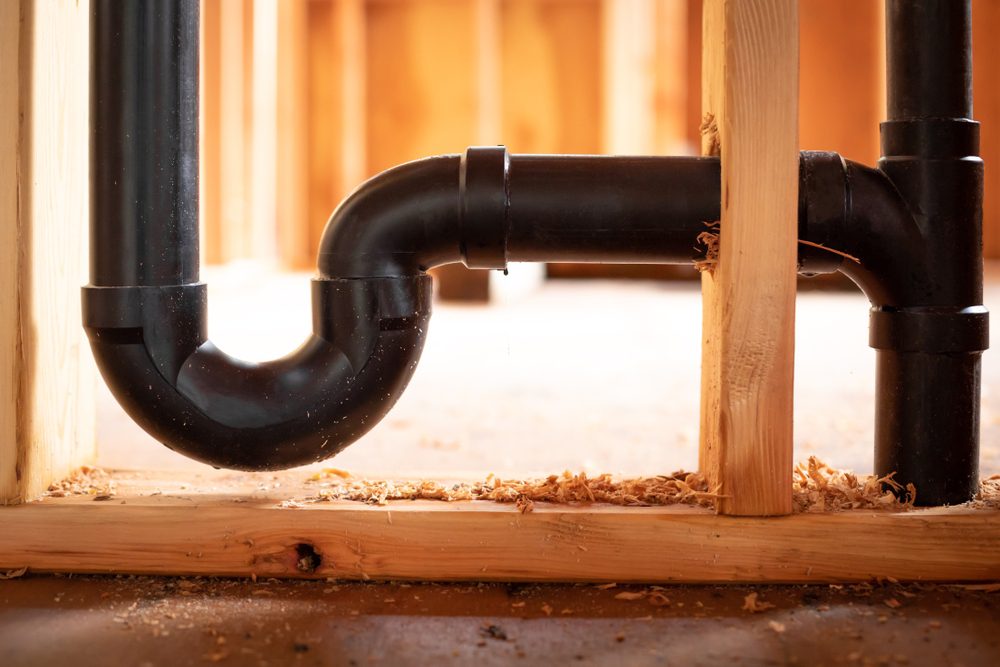The Reason Why Correct Ventilation is Key in Plumbing Systems
The Reason Why Correct Ventilation is Key in Plumbing Systems
Blog Article
What are your opinions on What Are Plumbing Vents and Why Are They Important??

Correct ventilation in pipes systems is usually ignored, yet it is essential for keeping the performance and safety of your home's plumbing. Air flow assists regulate atmospheric pressure, protect against the buildup of dangerous gases, and ensure the efficient elimination of waste. In this overview, we will explore the importance of appropriate pipes air flow, how it works, and the benefits it brings to your plumbing system.
Understanding Air Flow in Plumbing
Ventilation in plumbing refers to the network of pipelines that allow air to stream through the drainage system. These vents serve multiple purposes, consisting of managing atmospheric pressure within the pipelines, stopping sewage system gases from getting in the home, and aiding in the smooth circulation of wastewater.
How Ventilation Functions in Plumbing Solutions
Atmospheric Pressure Policy
Appropriate air flow keeps balanced air pressure within the plumbing system. When water moves via pipes, it displaces air. Without sufficient air flow, this displacement can develop unfavorable stress, resulting in slow down drains pipes or siphoning of water from traps, which can trigger undesirable odors to seep into the home.
Stopping Sewage System Gas Buildup
One of one of the most crucial features of pipes vents is to prevent drain gases, such as methane and hydrogen sulfide, from collecting within the home. These gases can present major health and wellness dangers and are extremely combustible. Vent pipelines enable these gases to leave securely outdoors.
Helping in Waste Removal
Air flow assists in the efficient elimination of wastewater by preventing airlocks in the drainage system. When air can flow easily with the vents, it permits water and waste to flow smoothly with the pipes, minimizing the threat of clogs and back-ups.
Sorts Of Pipes Vents
Key Stack Vent
The primary stack vent, additionally called the air vent stack, is the primary air vent in a plumbing system. It prolongs from the primary drainpipe line up via the roof covering, enabling gases to run away and fresh air to enter the system.
Branch Vent
Branch vents attach to the main pile air vent and serve specific fixtures, such as sinks, commodes, and showers. These vents make certain that each fixture has adequate air flow to function correctly.
Air Admission Shutoff (AAV).
An Air Admission Valve (AAV) is a one-way shutoff that enables air to go into the pipes system without the demand for a typical air vent pipe prolonging with the roof covering. AAVs are typically utilized in improvements or areas where mounting a common vent is not practical.
Indicators of Poor Air Flow in Plumbing.
Slow Draining Fixtures.
If your sinks, tubs, or toilets are draining pipes gradually, it could be a sign of inadequate ventilation. Poor air flow can create a vacuum cleaner impact, making it hard for water to drain pipes correctly.
Gurgling Appears.
Gurgling noises coming from drains pipes are frequently an outcome of air being sucked via water traps because of adverse stress in the pipes. This is a clear sign of not enough air flow.
Unpleasant Smells.
Sewer smells inside your home are a red flag that your pipes system is not correctly aerated. This might suggest that drain gases are not being properly aired vent outside, resulting in possibly dangerous conditions.
Typical Air Flow Errors.
Inadequate Vent Sizing.
Using undersized vent pipes can bring about inadequate air circulation and stress imbalances in the system. It's vital to utilize vents that meet the specific demands of your pipes system.
Improper Vent Placement.
Positioning vents as well much from the fixtures they serve can lower their efficiency. Appropriate positioning guarantees that air can stream easily and successfully with the system.
Disregarding Code Needs.
Building regulations supply specific guidelines for plumbing air flow. Neglecting these codes can result in a system that falls short to work appropriately and may bring about pricey repair services or health hazards.
Advantages of Correct Air Flow.
Enhanced System Effectiveness.
Effectively aerated pipes systems run more efficiently, with less obstructions, faster draining pipes, and less pressure on the pipes. This performance prolongs the life-span of the plumbing system.
Improved Air High Quality.
By protecting against sewer gases from entering your home, correct ventilation adds to better interior air high quality, making your living atmosphere healthier and much more comfortable.
Protecting Against Water Damage.
Ample air flow assists stop water from being siphoned out of catches, which can cause sewage system gases getting in the home and causing water damage over time.
Steps to Ensure Appropriate Ventilation.
Consulting Plumbing Codes.
Always consult regional plumbing codes when designing or modifying your plumbing system. These codes supply the essential standards for proper airing vent and guarantee your system fulfills security requirements.
Regular Inspection and Upkeep.
Normal inspections can help determine potential air flow issues before they become major problems. Maintenance tasks, such as cleansing vent pipelines and checking for clogs, are essential for maintaining the system in good working order.
Expert Installment.
For new installations or major alterations, it's important to employ a professional plumbing professional. They have the experience to guarantee the air flow system is properly created and set up according to code.
Verdict.
Correct ventilation is a crucial part of any kind of plumbing system, ensuring that it works successfully and safely. By understanding the value of ventilation, identifying the indications of inadequate ventilation, and taking steps to keep your system, you can prevent pricey problems and secure your home's air high quality.
4 Things You Should Know About Your Plumbing Vents
What Plumbing Vents Are
Also called a vent stack, a plumbing vent is a vertical pipe attached to your drain line that runs through your roof. The plumbing vent pipe, or plumbing air vent, removes gas and odors from your plumbing system and allows fresh air to enter the pipes, helping the water to flow out of the drain pipes.
What Plumbing Vents Do
Plumbing vents have two basic functions. One of which is to allow unpleasant smelling wastewater and sewer gasses to escape your plumbing system instead of entering your home. Plumbing vent pipes are typically located on roofs, away from windows, to ensure the fumes exit the home completely.
The other function of the plumbing vent is to move fresh air into your plumbing system. This helps move water through every plumbing fixture in your house, like toilets and sink drains. Think of the way in which you need to let a little air into the bottle as you pour soda in order to make the drink flow smoothly.
Different Types of Plumbing Vents
True vent: This is the most common vent option. In simplest terms, a true vent is a vertical pipe attached to your drain line that exits through the roof. They often function as the main vent that other fixtures can connect to. Re-vent pipe or auxiliary vent: Attached to the drain line near specific plumbing fixtures, re-vent pipes run up and over to connect to the main vent. Common vent: Two plumbing fixtures installed on opposite sides of a wall are typically tied into the vent stack using something known as a sanitary cross. Wet vent: This venting option operates as a drain pipe and a vent at the same time. Wet vent drainage systems drain water from one fixture while venting the air from another. Although they’ve been used for over 100 years, wet vent systems have only recently been added to the plumbing code in many areas. If you’re planning on installing one in a bathroom remodel, make sure you check your local code prior to construction. Loop vent: For free-standing fixtures like kitchen island sinks, loop vents are ideal. These vent pipes run under the floor, rise from the P-trap, and create a loop inside the cabinet sink. Air admittance valve: An AAV is a one-way mechanical valve typically installed at the site of the plumbing fixture. AAVs allow venting to occur without having to tie into a larger venting system. They’re ideal for venting fixtures where you aren’t able to easily connect to an existing vent system. Common Plumbing Vent Issues
Although vent pipes typically don’t have water flowing through them, they’re still subject to many typical plumbing issues. For example, clogs are one of the most common problems associated with sewer vent pipes. If your vent pipe gets clogged, all of your plumbing fixtures tied into the vent stack will be affected.
A sink with a slow drain that bubbles and gurgles or a strong sewage smell around your toilet are both indicators that your toilet vent pipe is clogged. Because most vent pipes exit through the roof, old leaves, twigs or even a bird’s nest could be clogging the pipe.
Clogs in your vent pipe system cause a buildup of negative pressure, meaning that water won’t be able to flow out of your home very well. It’s similar to putting your finger over the opening of a straw to trap water inside. When you remove your finger, the water is able to flow out of the straw.
If you suspect you have any blockage in your vent, make sure you have a professional come examine the situation. Left unchecked, a blocked air vent can lead to other costly repairs, like leaks and sediment buildup.
Under Pressure
Pipe vents are essential aspects of a home’s plumbing system. Owning a home means learning about all sorts of things you never put much thought into before. But by understanding as much as you can about the important systems of your home, you can keep those budgets intact and those anxiety levels low.
https://www.homeserve.com/en-us/blog/home-improvement/plumbing-vents/

We hope you enjoyed reading our part about The Upsides of Proper Ventilation in Plumbing Design. Thank you so much for taking a few minutes to read our piece of content. Appreciated our post? Please share it. Help others check it out. I value reading our article about Essential Plumbing Vent Pipes: Understanding Their Role.
Call Today Report this page